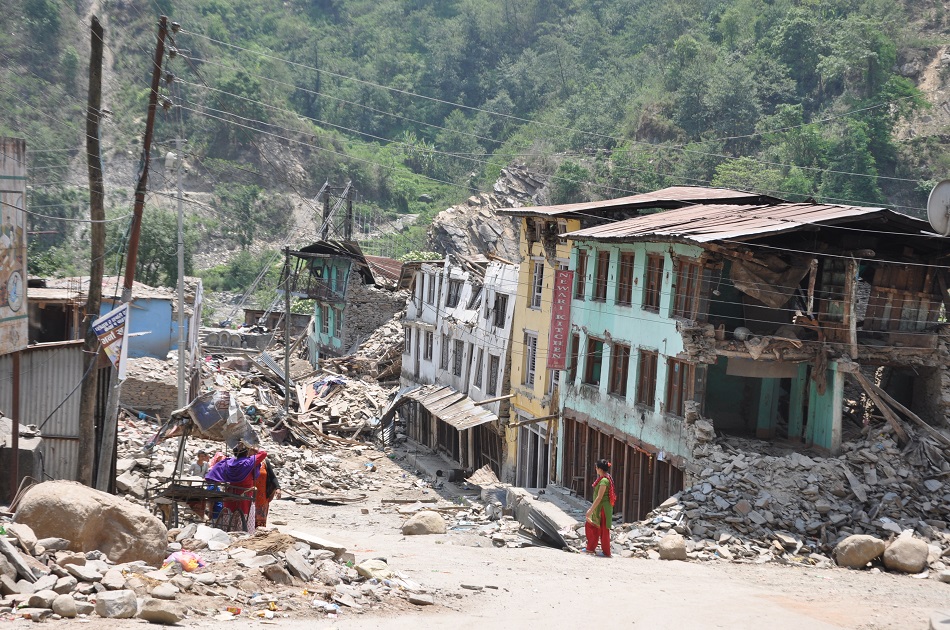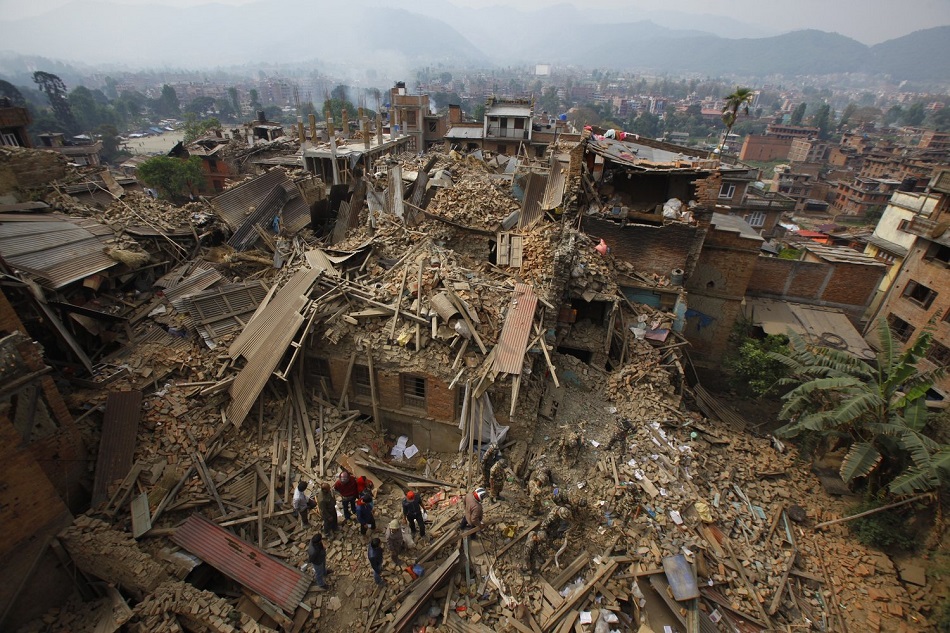As soon as news spread that 7.8-magnitude and 7.3-magnitude earthquakes struck Nepal in April and May of this year, earthquake structural engineering experts from our firm, Miyamoto International, hopped on planes from three countries to offer assistance. We do this in hopes that our expertise and technical advice might help stricken communities recover; help them to build better and ultimately help save lives.

While structural engineers are not first responders, we are well equipped to assess whether it is safe for people to return to homes, businesses, schools and critical-services buildings. We also can help people understand why some buildings stand while others collapse. This information is essential. It is the only way to protect people from future tragedy.
On touch down in Nepal, we found the airport filled with frightened people leaving the country. It is always a bit sobering to see people leaving while you head in. We struck out for the hotel we could only hope was still standing. Once there, we found the building to be structurally sound, although uneasy guests opted to sleep in the courtyard, leaving us, the structural engineers, the only ones sleeping inside.
I expected the devastation in Kathmandu to be much greater than it was – we all did. Yet because the epicenter was about 50 miles from the capital, the quake’s power was partially dissipated by distance and the Kathmandu Valley’s soft river soil, which likely saved many lives and structures.
Nepal’s Minister of Education asked our team to examine some of the schools in remote areas. We drove into a village to a horrible find: a large, three-story school reduced to a rubble pile of brick, concrete and broken desks. What we found were columns made of bricks without any reinforcement. This is something I saw in schools in Sichuan, China in 2008, where poor construction practices left tens of thousands of school children vulnerable to disaster. And yet, I have to say that Nepal was lucky. Although more than 7,000 of the country’s schools were severely damaged or destroyed, the quake hit midday on a Saturday when students were not in school. Had the quake hit in the middle of a school day, tens of thousands of students would have died.

Driving out beyond the city, we found rural areas in the central and western regions particularly devastated, with entire villages destroyed and further isolated by road damage, closures, rugged terrain and the threat of landslides. As is the case in much of the world, unreinforced masonry construction presented the biggest problem. In rural Nepal – where traditional homes are made of stone, mud and wood – we found up to 90 percent of the structures destroyed. Whole villages were gone.

Around the world, the experts involved in construction – from the engineer and contractor to the building inspector – have to invest in constructing safe buildings. No corruption. No excuses. Build as if your children are attending that school or living in those homes and we will begin to have seismically resilient cities.
Many of the newer high-rise buildings in Kathmandu have also exhibited crippling damage and we have assessed more than 30 of these to date. Even when building codes are adhered to, a big gap exists between what code provides and what society expects. Even in places like Los Angeles and San Francisco, people don’t understand that. At one meeting in Kathmandu, luxury condo owners were stunned and angry to learn that the building they bought into met standards, but was still too heavily damaged to occupy. These buildings are not usable now. The financial loss is enormous.

We have to understand that people don’t have to die in earthquakes. Earthquakes don’t kill people; buildings kill people. Or more precisely, poorly constructed buildings. This is tragic and avoidable because we know how to design seismically strong buildings. When an earthquake strikes, our disaster response efforts include “knowledge transfer,” during which we train engineers, masons and contractors on simple seismic techniques that save lives and help communities “build back better.” Our profession has disaster-resilient solutions for new construction and retrofits.
At Miyamoto International, our mission is to save lives and positively impact economies through our work. In China, 169,000 lives were lost, including tens of thousands of students in 7,000 classrooms. In 2010 in Haiti, more than 200,000 people died. In Nepal, the earthquake killed more than 8,600 people. It doesn’t have to be this way. Building seismically resilient cities is possible. It is achievable. We can save lives.





It is pretty scary what an earthquake can do, especially in the more rural areas. I hope that the Nepalese people are doing better and are able to rebuild their cities. Hopefully, they will be able to rebuild stronger and better than before.
http://www.jjkgroup.com/services.html